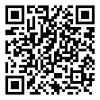首頁(yè) > 產(chǎn)品中心 > 科研抗體 > 標(biāo)記一抗
產(chǎn)品中心
相關(guān)產(chǎn)品
標(biāo)記一抗
英文名稱(chēng)Anti-ANKRD13B/FITC
中文名稱(chēng):FITC標(biāo)記的錨蛋白重復(fù)結(jié)構(gòu)域蛋白13B抗體
別 名Ankrd13b; ANKRD13B(ankyrin repeat domain 13B); ankyrin repeat domain 13B; AN13B_HUMAN.
規(guī)格:100ul
說(shuō) 明 書(shū)100ul
研究領(lǐng)域細(xì)胞生物 免疫學(xué)
抗體來(lái)源Rabbit
克隆類(lèi)型Polyclonal
交叉反應(yīng) Human, Mouse, Rat, Chicken, Pig, Cow, Rabbit,
產(chǎn)品應(yīng)用IF=1:50-200
not yet tested in other applications.
optimal dilutions/concentrations should be determined by the end user.
分 子 量70kDa
性 狀Lyophilized or Liquid
濃 度1mg/ml
免 疫 原KLH conjugated synthetic peptide derived from human ANKRD13B
亞 型IgG
純化方法affinity purified by Protein A
儲(chǔ) 存 液0.01M TBS(pH7.4) with 1% BSA, 0.03% Proclin300 and 50% Glycerol.
保存條件Store at -20 °C for one year. Avoid repeated freeze/thaw cycles. The lyophilized antibody is stable at room temperature for at least one month and for greater than a year when kept at -20°C. When reconstituted in sterile pH 7.4 0.01M PBS or diluent of antibody the antibody is stable for at least two weeks at 2-4 °C.
產(chǎn)品介紹background:
Ankyrins are membrane adaptor molecules that play important roles in coupling integral membrane proteins to the spectrin-based cytoskeleton network. Mutations of ankyrin genes can lead to severe genetic diseases, such as fatal cardiac arrhythmias and hereditary spherocytosis. ANKRD13B (ankyrin repeat domain 13B) is a 626 amino acid protein that contains two ANK repeats and three ubiquitin-interacting motif (UIM) repeats. Conserved in dog, cow, mouse and rat, ANKRD13B exists as two alternatively spliced isoforms. The gene that encodes ANKRD13B maps to human chromosome 17, which makes up over 2.5% of the human genome, with about 81 million bases encoding over 1,200 genes. Two key tumor suppressor genes are associated with chromosome 17, namely, p53 and BRCA1. Malfunction or loss of p53 expression is associated with malignant cell growth and Li-Fraumeni syndrome. BRCA1 is recognized as a genetic determinant of early onset breast cancer. Chromosome 17 is also linked to neurofibromatosis, dysregulated Schwann cell growth, Alexander disease, Birt-Hogg-Dube syndrome and Canavan disease.
中文名稱(chēng):FITC標(biāo)記的錨蛋白重復(fù)結(jié)構(gòu)域蛋白13B抗體
別 名Ankrd13b; ANKRD13B(ankyrin repeat domain 13B); ankyrin repeat domain 13B; AN13B_HUMAN.
詳細(xì)介紹:
規(guī)格:100ul
說(shuō) 明 書(shū)100ul
研究領(lǐng)域細(xì)胞生物 免疫學(xué)
抗體來(lái)源Rabbit
克隆類(lèi)型Polyclonal
交叉反應(yīng) Human, Mouse, Rat, Chicken, Pig, Cow, Rabbit,
產(chǎn)品應(yīng)用IF=1:50-200
not yet tested in other applications.
optimal dilutions/concentrations should be determined by the end user.
分 子 量70kDa
性 狀Lyophilized or Liquid
濃 度1mg/ml
免 疫 原KLH conjugated synthetic peptide derived from human ANKRD13B
亞 型IgG
純化方法affinity purified by Protein A
儲(chǔ) 存 液0.01M TBS(pH7.4) with 1% BSA, 0.03% Proclin300 and 50% Glycerol.
保存條件Store at -20 °C for one year. Avoid repeated freeze/thaw cycles. The lyophilized antibody is stable at room temperature for at least one month and for greater than a year when kept at -20°C. When reconstituted in sterile pH 7.4 0.01M PBS or diluent of antibody the antibody is stable for at least two weeks at 2-4 °C.
相關(guān)資料:
產(chǎn)品介紹background:
Ankyrins are membrane adaptor molecules that play important roles in coupling integral membrane proteins to the spectrin-based cytoskeleton network. Mutations of ankyrin genes can lead to severe genetic diseases, such as fatal cardiac arrhythmias and hereditary spherocytosis. ANKRD13B (ankyrin repeat domain 13B) is a 626 amino acid protein that contains two ANK repeats and three ubiquitin-interacting motif (UIM) repeats. Conserved in dog, cow, mouse and rat, ANKRD13B exists as two alternatively spliced isoforms. The gene that encodes ANKRD13B maps to human chromosome 17, which makes up over 2.5% of the human genome, with about 81 million bases encoding over 1,200 genes. Two key tumor suppressor genes are associated with chromosome 17, namely, p53 and BRCA1. Malfunction or loss of p53 expression is associated with malignant cell growth and Li-Fraumeni syndrome. BRCA1 is recognized as a genetic determinant of early onset breast cancer. Chromosome 17 is also linked to neurofibromatosis, dysregulated Schwann cell growth, Alexander disease, Birt-Hogg-Dube syndrome and Canavan disease.

